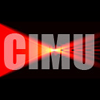
|
Stephanie Totten Research Scientist/Engineer III sitotten@apl.uw.edu Phone 206-543-7875 |
Education
A.A. Veterinary Technology, Nebraska College of Technical Agriculture, 2013
B.S. Veterinary Technologist, University of Nebraska - Lincoln, 2014
|
Publications |
2000-present and while at APL-UW |
Advancing boiling histotripsy dose in ex vivo and in vivo renal tissues via quantitative histological analysis and shear wave elastography Ponomarchuk, E., G. Thomas, M. Song, Y.-N. Wang, S. Totten, G. Schade, J. Thiel, M. Bruce, V. Khokhlova, and T. Khokhlova, "Advancing boiling histotripsy dose in ex vivo and in vivo renal tissues via quantitative histological analysis and shear wave elastography," Ultrasound Med. Biol., 50, 1936-1944, doi:10.1016/j.ultrasmedbio.2024.08.022, 2024. |
More Info |
1 Dec 2024 |
|||||||
|
Objective |
|||||||||
Comparative study of histotripsy pulse parameters used to inactivate Escherichia coli in suspension Ambedkar, P.A., Y.-N. Wang, T. Khokhlova, M. Bruce, D.F. Leotta, S. Totten, A.D. Maxwell, K.T. Chan, W.C. Liles, E.P. Dellinger, W. Monsky, A.A. Adedipe, and T.J. Matula, "Comparative study of histotripsy pulse parameters used to inactivate Escherichia coli in suspension," Ultrasound Med. Biol., 49, 2451-2458, doi:10.1016/j.ultrasmedbio.2023.08.004, 2023. |
More Info |
1 Dec 2023 |
|||||||
|
Bacterial loads can be effectively reduced using cavitation-mediated focused ultrasound, or histotripsy. In this study, gram-negative bacteria (Escherichia coli) in suspension were used as model bacteria to evaluate the effectiveness of two regimens of histotripsy treatments: cavitation histotripsy (CH) and boiling histotripsy (BH). |
|||||||||
Chronic effects of pulsed high intensity focused ultrasound aided delivery of gemcitabine in a mouse model of pancreatic cancer Khokhlova, T.D., Y.-N. Wang, H. Son, S. Totten, S. Whang, and J.H. Hwang, "Chronic effects of pulsed high intensity focused ultrasound aided delivery of gemcitabine in a mouse model of pancreatic cancer," Ultrasonics, 132, doi:10.1016/j.ultras.2023.106993, 2023. |
More Info |
1 Jul 2023 |
|||||||
|
Pulsed high intensity focused ultrasound (pHIFU) is a non-invasive method that allows to permeabilize pancreatic tumors through inertial cavitation and thereby increase the concentration of systemically administered drug. In this study the tolerability of weekly pHIFU-aided administrations of gemcitabine (gem) and their influence on tumor progression and immune microenvironment were investigated in genetically engineered KrasLSL.G12D/ƥ; p53R172H/ƥ; PdxCretg/ƥ (KPC) mouse model of spontaneously occurring pancreatic tumors. KPC mice were enrolled in the study when the tumor size reached 4–6 mm and treated once a week with either ultrasound-guided pHIFU (1.5 MHz transducer, 1 ms pulses, 1% duty cycle, peak negative pressure 16.5 MPa) followed by administration of gem (n = 9), gem only (n = 5) or no treatment (n = 8). Tumor progression was followed by ultrasound imaging until the study endpoint (tumor size reaching 1 cm), whereupon the excised tumors were analyzed by histology, immunohistochemistry (IHC) and gene expression profiling (Nanostring PanCancer Immune Profiling panel). The pHIFU + gem treatments were well tolerated; the pHIFU-treated region of the tumor turned hypoechoic immediately following treatment in all mice, and this effect persisted throughout the observation period (2–5 weeks) and corresponded to areas of cell death, according to histology and IHC. Enhanced labeling by Granzyme-B was observed within and adjacent to the pHIFU treated area, but not in the non-treated tumor tissue; no difference in CD8 + staining was observed between the treatment groups. Gene expression analysis showed that the pHIFU + gem combination treatment lead to significant downregulation of 162 genes related to immunosuppression, tumorigenesis, and chemoresistance vs gem only treatment. |
|||||||||






